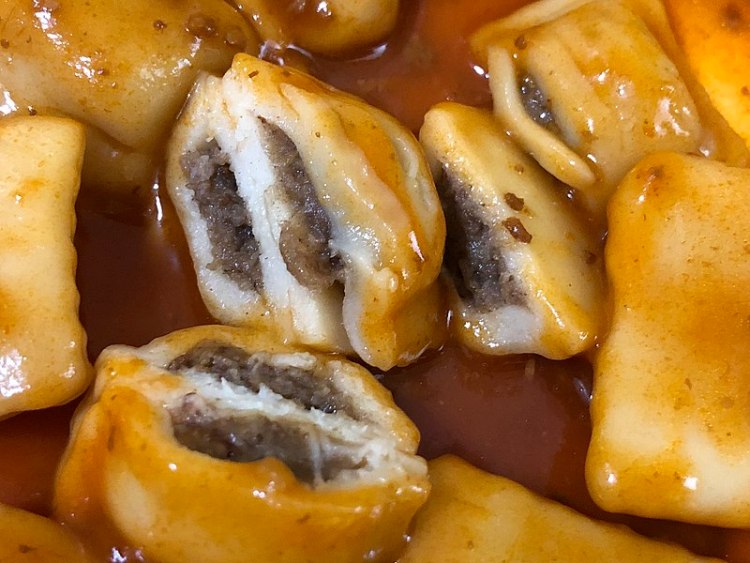Just as civilians can now purchase MREs, to eat as emergency rations, some of the food in your pantry today were once field rations. Innovation in food processing and preservation methods that began in the military was soon applied in the civilian world; thus, some of our favorite instant and processed foods, whether we are aware or not, were originally designed for the military. Here are three examples:
Canned Foods
Expectedly, canned foods were originally designed for soldiers. It all started with the French government trying to feed the armies of Napoleon. Meanwhile, the US army had its own problems with feeding troops in the field when actual field kitchens were unavailable or would draw enemy artillery by their smell and smokey fires. So, they adopted the practice and invested their resources to create a light and long-lasting ration. These developments were done either in the army’s own laboratories or in the universities they collaborated with. These findings were shared with food corporations in the United States, who were equally eager to apply and bring out these innovations as government vendor contractors on supermarket shelves. At the height of the Cold War, Americans were laying away food in case of a nuclear attack and for the convenience of not having to go to the store every couple of days to buy fresh fruit and vegetables. Science could now preserve these staples for years using heat pasteurization and vacuum pressure packaging in cans.
One of the first and most widely regarded canned dishes during WWII came from the cuisine of Italy. This was when the Boiardi family owned an Italian restaurant in Cleveland and shared their Italian family recipe with local families so they could cook it in their own homes. Soon, they began jarring their sauce and selling it all over the country, and it became the best-selling brand in the U.S.
When WWII broke out, the US military wanted their soldiers to taste this Italian goodness. Thus, they asked the company, now known as “Chef Boyardee,” to produce their food in cans as military rations. In 1946, without going into the sheer numbers involved, Chef Boyardee became the largest “C” and “K” ration supplier for the U.S. military in WWII, with a peak strength of nearly 13 million service members. Hector Boiardi was awarded The Gold Star for his efforts during the time of crisis. The award was one of the highest honors a civilian can receive from the military. Nearly half a century later, in 1991, during the first Gulf War, the most requested canned food asked for by service members was from, you guessed it, Chef Boyardee.
Instant Coffee
Close-up view of instant coffee. (Chris RubberDragon, CC BY-SA 2.0, via Wikimedia Commons)
If you’re in a morning rush and don’t have the time to indulge in brewing your coffee or even going to line up to get your usual caffeine fix from your favorite coffee shop, then instant coffee has got your back. While it’s not everyone’s cup of tea (or should I say coffee?), it still does the job of keeping you alert for the next few hours. Originally, the freeze-drying process for coffee was used to transport blood and vaccines to the medics in the warzone of World War II until the method was repurposed to make foods long-lasting and lightweight. This was applied not only in coffee but also in the vegetable bits in your instant ramen, the fruits in your favorite breakfast cereals, and even your cake mix. Delicious and convenient without a fuss, thanks to the US military. Instant coffee is still offered in the rations of our troops today.
Energy and Granola Bars
A chewy chocolate chip granola bar made by Keebler. (Evan-Amos, CC0, via Wikimedia Commons)
It all started with the need to provide the paratroopers of World War II with indestructible, pocket-sized, heat-resistant, and highly nutritious that should taste better than a boiled potato, so the government worked with Hershey’s and created bitter, brick-hard, jaw-breaking chocolate bars that the soldiers jokingly called “Hitler’s secret weapon.” (We wrote about the whole story here.)
The army then attempted to develop a sweet fortified fruit bar and, this time, of intermediate moisture. These fruit bars turned into granola bars and energy bars that can now be seen in every grocery store and gas station today. These bars were designed not to melt easily and, at the same time, not taste very good. They didn’t want soldiers to just snack on and finish them in one sitting but instead only eat them whenever necessary. They also designed them to be somehow heat resistant, but not too much, so the soldiers would not open a muck of energy snack when they were ready to consume them. According to the former director of the Combat Feeding Directorate at Natick, these chewy replacement bars were supposed to replace the concept of breakfast, lunch, and dinner with “more of a grazing event.”
Just as civilians can now purchase MREs, to eat as emergency rations, some of the food in your pantry today were once field rations. Innovation in food processing and preservation methods that began in the military was soon applied in the civilian world; thus, some of our favorite instant and processed foods, whether we are aware or not, were originally designed for the military. Here are three examples:
Canned Foods
Expectedly, canned foods were originally designed for soldiers. It all started with the French government trying to feed the armies of Napoleon. Meanwhile, the US army had its own problems with feeding troops in the field when actual field kitchens were unavailable or would draw enemy artillery by their smell and smokey fires. So, they adopted the practice and invested their resources to create a light and long-lasting ration. These developments were done either in the army’s own laboratories or in the universities they collaborated with. These findings were shared with food corporations in the United States, who were equally eager to apply and bring out these innovations as government vendor contractors on supermarket shelves. At the height of the Cold War, Americans were laying away food in case of a nuclear attack and for the convenience of not having to go to the store every couple of days to buy fresh fruit and vegetables. Science could now preserve these staples for years using heat pasteurization and vacuum pressure packaging in cans.
One of the first and most widely regarded canned dishes during WWII came from the cuisine of Italy. This was when the Boiardi family owned an Italian restaurant in Cleveland and shared their Italian family recipe with local families so they could cook it in their own homes. Soon, they began jarring their sauce and selling it all over the country, and it became the best-selling brand in the U.S.
When WWII broke out, the US military wanted their soldiers to taste this Italian goodness. Thus, they asked the company, now known as “Chef Boyardee,” to produce their food in cans as military rations. In 1946, without going into the sheer numbers involved, Chef Boyardee became the largest “C” and “K” ration supplier for the U.S. military in WWII, with a peak strength of nearly 13 million service members. Hector Boiardi was awarded The Gold Star for his efforts during the time of crisis. The award was one of the highest honors a civilian can receive from the military. Nearly half a century later, in 1991, during the first Gulf War, the most requested canned food asked for by service members was from, you guessed it, Chef Boyardee.
Instant Coffee
Close-up view of instant coffee. (Chris RubberDragon, CC BY-SA 2.0, via Wikimedia Commons)
If you’re in a morning rush and don’t have the time to indulge in brewing your coffee or even going to line up to get your usual caffeine fix from your favorite coffee shop, then instant coffee has got your back. While it’s not everyone’s cup of tea (or should I say coffee?), it still does the job of keeping you alert for the next few hours. Originally, the freeze-drying process for coffee was used to transport blood and vaccines to the medics in the warzone of World War II until the method was repurposed to make foods long-lasting and lightweight. This was applied not only in coffee but also in the vegetable bits in your instant ramen, the fruits in your favorite breakfast cereals, and even your cake mix. Delicious and convenient without a fuss, thanks to the US military. Instant coffee is still offered in the rations of our troops today.
Energy and Granola Bars
A chewy chocolate chip granola bar made by Keebler. (Evan-Amos, CC0, via Wikimedia Commons)
It all started with the need to provide the paratroopers of World War II with indestructible, pocket-sized, heat-resistant, and highly nutritious that should taste better than a boiled potato, so the government worked with Hershey’s and created bitter, brick-hard, jaw-breaking chocolate bars that the soldiers jokingly called “Hitler’s secret weapon.” (We wrote about the whole story here.)
The army then attempted to develop a sweet fortified fruit bar and, this time, of intermediate moisture. These fruit bars turned into granola bars and energy bars that can now be seen in every grocery store and gas station today. These bars were designed not to melt easily and, at the same time, not taste very good. They didn’t want soldiers to just snack on and finish them in one sitting but instead only eat them whenever necessary. They also designed them to be somehow heat resistant, but not too much, so the soldiers would not open a muck of energy snack when they were ready to consume them. According to the former director of the Combat Feeding Directorate at Natick, these chewy replacement bars were supposed to replace the concept of breakfast, lunch, and dinner with “more of a grazing event.”



